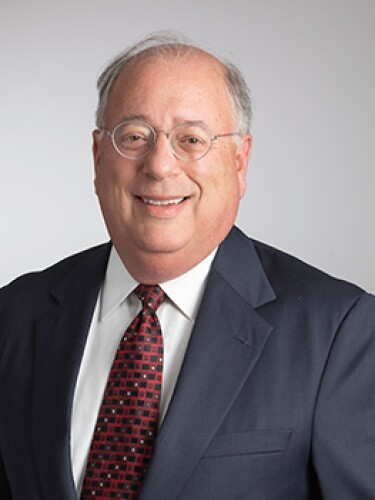Now that most people in North America and Europe are vaccinated and the COVID-19 pandemic is diminishing, Moderna is looking for its second act.
Maddie Meyer/Getty Images
Moderna catapulted into public consciousness after developing an effective COVID-19 vaccine in less than a year. Now that most people in North America and Europe are vaccinated and the pandemic is diminishing, the company is looking for its second act.
An ambitious plan is well underway to ensure Moderna continues to thrive. Not surprisingly, it is piggybacking off its recent success in mRNA vaccines with nearly four dozen programs in development.
“That’s one of the beauties of the mRNA technology – it has a lot of applications,” said Margery Fischbein, managing director of the healthcare practice at investment bank Cassel Salpeter & Co., in an interview with BioSpace. “Therefore, the portfolio is not as diverse as the numbers would suggest.”
This is because several programs are combinations (such as flu and SARS-CoV-2, or multiple SARS-CoV-2 variants) and vaccines for individual viral mutations.
But, this can be very efficient. Melissa J. Moore, Ph.D., CSO, scientific affairs at Moderna, elaborated on the technology’s utility.
“While each mRNA medicine provides a unique instruction set based on the nucleotide sequence in the mRNA, the manufacturing processes and means of mRNA delivery are the same across many different medicines,” she told BioSpace. “Thus, we can create new medicines just by changing the sequence of nucleotides in the mRNA.”
The Pipeline
Of more than 40 vaccines and therapeutics in development at Moderrna, about a dozen are geared to COVID-19. Phase III candidates include three COVID-19 vaccines for wildtype SARS-CoV-2 and the Omicron variant, as well as vaccines for flu, respiratory syncytial virus and cytomegalovirus.
In Phase II, Moderna is advancing vaccines for cancer and Zika virus, as well as five COVID-19 vaccines for combinations of wildtype, Beta and Delta variants. It’s also developing a next-generation COVID-19 vaccine that can be stored between 2 and 5°C. This would be a significant improvement over the deep-frozen temperature requirements of the initial vaccine.
At the earlier stages, 17 programs are in Phase I development. They include vaccines for HIV, cancer, Nipah, flu, RSV, COVID-19 and three systemic intracellular therapies. Preclinical programs include 13 vaccines for a wide range of applications, including Epstein Barr, flu and COVID-19 and therapeutics for cystic fibrosis and Crigler Najjar syndrome.
The ability to build vaccines using the existing mRNA platform “provides a huge advantage compared to traditional medicines, as we don’t have to reoptimize every parameter (e.g., the PK/PD properties and toxicology profile) for every new medicine,” Moore pointed out.
Another advantage is that Moderna does not need dedicated manufacturing equipment for each vaccine or therapeutic. “One mRNA medicine manufacturing facility can make many different vaccines and therapeutics simply by changing the mRNA sequence,” she explained.
All of these programs, however, are in development. This is, by definition, aspirational. Currently, Moderna is accruing orders, approvals and authorizations for its existing products.
The U.S. government recently agreed to purchase another 66 million doses of Moderna’s bivalent booster containing Omicron and wild-type SARS-CoV-2. The Canadian government purchased another 4.5 million doses of that bivalent booster in late August. The U.K.’s Medicines and Healthcare Products Regulatory Agency recently authorized that bivalent booster and the EMA Committee for medicinal products for human use recommended its use in adolescents in the EU.
Financial Ups and Downs
Moderna’s unaudited financial results for the first half of 2022 show sales of $10.5 billion, and approximately $18.1 billion in cash and investments. The company has bought back 18 million shares of stock so far - 9 million of which were bought in Q2 for $1.3 billion. Recently, it announced an open-ended plan to buy back another $3 billion worth of its stock.
“This is something companies often do when they have excess cash and are profitable,” Fischbein said.
Moderna’s second quarter financial results showed year-over-year growth in product sales of 8%, grant revenue of 32% and collaboration revenue of 94% (due to a project with AstraZeneca). This resulted in a 9% year-over-year increase in revenue.
At the same time, however, the cost of sales increased 84%, R&D costs were up 69% and total operating expenses were 78% greater than in the same quarter of 2021. Overall, net income declined 21%, compared to Q2 2021. Moderna reported Q2 earnings per share were $5.24, which exceeded analysts’ expectations but were still less than the same quarter last year.
Moderna has $21 billion worth of signed, advance purchase agreements but despite strong sales, share prices are down from their high of approximately $430 in October 2020 to around $142 at close of business Friday.
Watching the decline, analysts have generally lowered their target prices for the stock, with a consensus target price of $227.75, according to MarketBeat. Despite authorizations for Moderna’s COVID-19 booster shots in children in the U.S., Canada and Australia, and adolescents in the EU, analysts predict sales to fall throughout 2023 and 2024 before rebounding, according to Investors.com.
Rapid Growth
Moderna is in the fortunate but potentially challenging position of rapid growth. The company has grown from 760 employees in 2018 to more than 3,000 today – quadrupling in only four years.
When any company grows so quickly, maintaining the company culture is challenging, Fischbein said. “A major area where they’ve grown has been in manufacturing, which tends to be both capital- and employee-intensive.”
With that comes the challenge of keeping everyone mission-focused, Ira Z. Leiderman, managing director of the healthcare practice at Cassel Salpeter & Co., added.
“It’s hiring senior level people a notch below the C-suite who can manage their departments and programs and do their best to get a return on investment,” he told BioSpace. “Keeping everyone rowing in the same direction is a challenge for any young company.”
Richard Brandenstein, founding partner at FBR Law, said, “A huge mistake businesses make during periods of rapid growth is not imbursing employees. Your workforce will realize you are growing and high performers who don’t feel they are treated equally may leave.”
Neither Cassel Salpeter & Co. nor FBR was referring directly to the inner workings of Moderna.
Looking Forward
The company appears to have set a positive precedent with regulators.
Already, “Moderna’s platform has been proven safe and efficacious, and it has developed a good rapport with regulators at the FDA and EMA, which is a testament to their clinical affairs staff as well as their ability to execute fairly large clinical studies very effectively and efficiently,” Leiderman said.
Whether Moderna can sustain its current level of success is unknown. “This is biotech,” he said, which often encounters surprises even in late-stage clinical trials. “The good thing is that the company has the resources it needs,” to afford some misses and support some successes.
In the coming decades, Moore said she envisions Moderna as a “leader in mRNA medicines, with a broad portfolio of vaccines and therapeutics,” with rapid development and manufacturing capabilities. There’s a more than fair chance she’s right.









